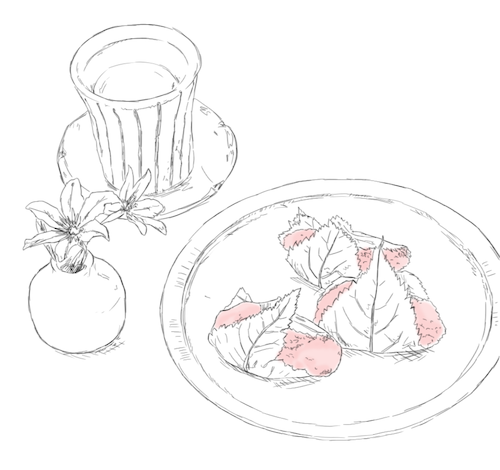
What is Sakura-mochi?
Sakura-mochi is a type of wagashi, or Japanese confectionery, made with sweet azuki bean paste wrapped in sticky pink mochi rice and a salted sakura leaf.
Unlike traditional wagashi desserts, sakura-mochi has a slightly herbal aroma to it, and the salty-sweetness from the leaves is said to pair well with sake. The earthy scent of the flower is immersed in the starchiness of the mochi, which creates a delicate layer of complexity in the flavor.
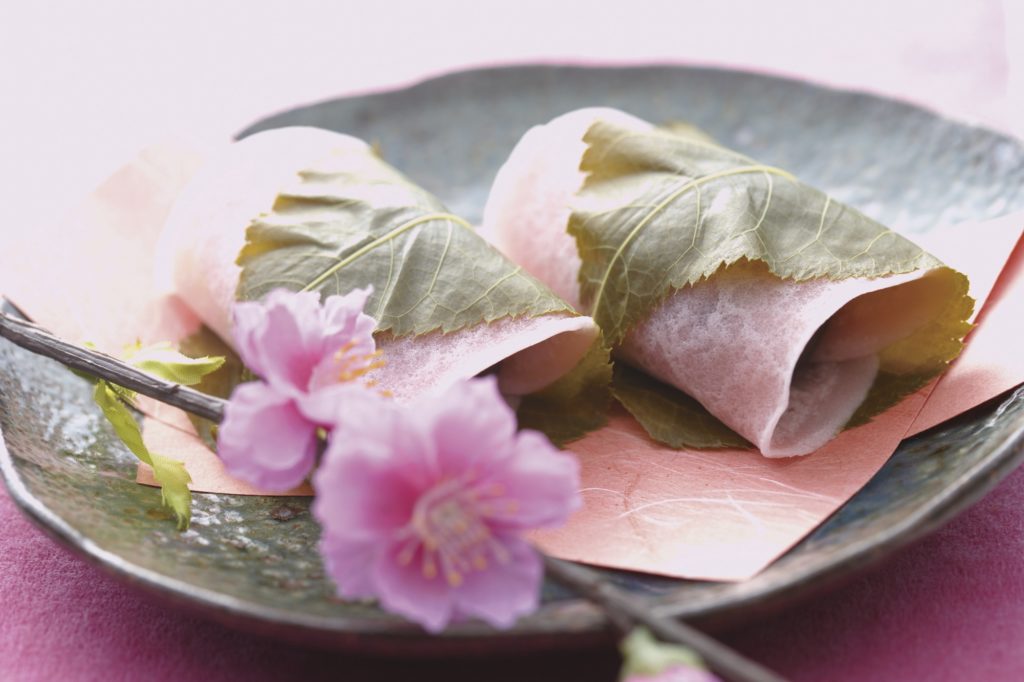
History of Sakura-mochi
Sakura-mochi is said to be first founded at a shop near Chomeiji Temple around 300 years ago. The temple is located near Sumidagawa river, a river that is well known for having a lot of sakura trees growing along the bank.
As the story goes, there was a gatekeeper there who would always be sweeping the sakura leaves in the spring. He thought that the fallen leaves were such a waste, and so instead of throwing them out the gatekeeper decided to take the sakura leaves and preserve them in salt water, and used it to wrap leftover mochi. They were instantly popular.
Today Sumidagawa river is famous for its sakura trees, and so you can often find small confectionery shops lined up outside selling sakura-mochi in the springtime.
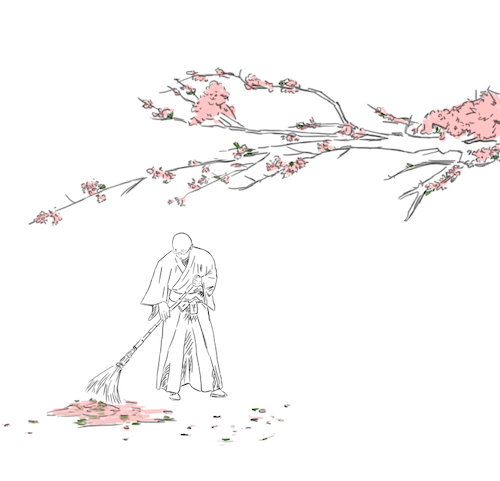
Seasons, Nature, and Naming of Sakura Desserts in Japanese Tea Ceremonies
But the use of sakura desserts in Japanese tea ceremonies goes back centuries. Traditionally, wagashi is strongly interconnected with nature, and many Japanese people will speak to Japanese confectionery as being able to “experience the seasons with taste”.
Japanese tea ceremonies as we know it today were first founded by Sen Rikyu, a man considered the most profound tea master in Japanese history.
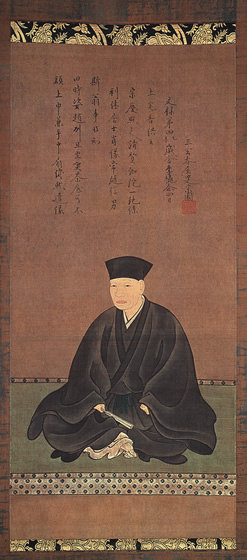
His teachings were based on Zen Buddhist principles of harmony, respect, purity, and tranquility, and that every element in the tea ceremony room should naturally fall in line with the other. To adhere to these principles, Sen Rikyu would ask confectionary shops to specifically design pieces that would precisely follow the theme and season of the ceremony.
For example, a sakura dessert would not be a simple sakura-mochi, but in tea ceremonies would be designed in a way that would make the individual think about a specific point in the sakura’s lifecycle. It could be from when the flower is just budding, in full bloom, or even after its petals have fallen, and created a pink blanket of flower petals down a river: This part of a sakura’s life cycle is called “hanaikada”, because the fallen petals almost look like a pink raft when it’s floating down a river.
*Note: “Hanaikada” directly translates to “flower raft”
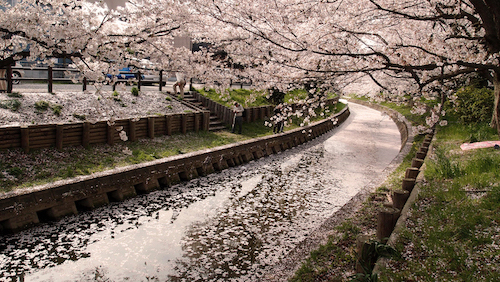
In the traditional East Asian lunisolar calendar, the seasons are actually divided into 24 solar terms, instead of the four often used today. Rather than specific dates, they are based on patterns from nature such as when early crops begin to show their roots, or when the autumn leaves colors have deepened.
Considering the 24 solar terms, wagashi shops would design pieces to match this timing of the seasons perfectly for Japanese ceremonies. Imagining the difference in the spring time between when the sakura buds begin to peek out from the branches, to when they slowly begin to bloom into their pinkish-white colors, to when they fall into a hanaikada, each piece would carry a very different sentiment.
Memories of Sakura-mochi
Sakura-mochi is not just a seasonal delicacy, but its appearance has strong ties with memory.
For students in particular, the spring sakura season falls in line with the end of the Japanese school system’s term. For seniors there can be mixed feelings of joy, accomplishment, as well as a bit of melancholy as students graduate their student life. Sakura-mochi’s appearance serves as a landmark reminder of the end and beginning of times, as their life goes through a major change.

For children and families, the onset of sakura season means warmer and sunnier weather, and uplifted spirits. People spend increasingly more time outside with their loved ones, drinking and eating sakura-mochi under the shade of the pink trees. Unchanged in its simplicity and taste throughout generations, the annual tradition of enjoying sakura-mochi under the cherry blossom trees is a grounding and comforting event for many individuals.
Meaning different things to different people, sakura-mochi regardless serves as a reminder and memory to someone, of a previous time or something they look forward to in the future. Memories of the taste and scent of sakura-mochi often bring about these warmer feelings of self-reflection and nostalgia.
My Fondness for Sakura-mochi
Sakura-mochi is a simple and modest dessert, but maybe it’s stubbornness to trends is what makes the sweet so dear and special to many individuals. The saltiness of the leaf, and sweet, floral aroma of the sticky, pink mochi evokes a certain fondness that many others share. Born out of tradition with the seasons and a bit of creativity, sakura-mochi is unique because with it you can taste the memories of spring.

Special thank you to Yasuharu Mizuhara, 4th-generation owner of well-known wagashi shop Seigetsudo for informing this piece. He spoke to me about wagashi, and taught me about the details and history of this confectionery that make it so unique to Japanese food culture.

If you enjoyed this piece, please let me know at kokumura@kakikata.space! If you have any questions or comments for me, please don’t hesitate to reach out– I love to share and talk about Japanese food, and would love to hear from you. Warm regards, Kaki
[…] Watercolor by Kaki Okumura […]